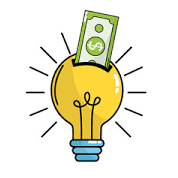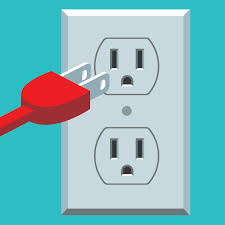Summer is here and it’s time to think about ways to lower energy costs and save money for summer fun.
Air-conditioning
- Clean or replace filters monthly. Dirty filters make your system work harder and run longer.
- Outside A/C units (condensers) shaded by trees or other means work more efficiently and use up to 10 percent less electricity.
- Clean A/C condenser/evaporator coils at beginning of season. Clean coils to lower energy costs and extend unit’s life. The fin coils on the outside unit can be washed with a hose. Coils on inside units are best serviced by a trained technician.
- Keep debris, high grass and other obstacles away from the condenser for adequate airflow. Blockage causes the condenser to work harder and run longer.
- Use less air conditioning. Set thermostat at 78° or higher in summer. Each degree cooler will increase energy use by 6-8 percent.
- Do not close vents in unused rooms. This could increase pressure and cause leaks in ducts. This does not apply to homes with window units, where closing off unused rooms will reduce costs.
- High-efficiency A/C units and heat pumps use up to 40 percent less electricity than older models.
- An attic radiant barrier, usually made of aluminum foil bonded to paper, helps block heat flow through the roof into the house during summer. It can reduce annual energy bills by 3-8 percent.
- Inadequate attic insulation can cause loss of up to 40 percent of cool air. The average 10- to15-year-old home has R-11 to R-15 insulation but needs R-30 (5-6 additional inches).
- Install a programmable thermostat that automatically adjusts temperature during the day or at night, keeping you from forgetting. A programmable thermostat can save up to $100 a year.
- Fans blowing directly on you can make temperatures feel up to 4 degrees cooler. Fans blowing, but not directly on you will not produce the same effect.
Refrigerators, freezers
- Older refrigerators use up to 50 percent more energy than new efficient models. After cooling and water heaters, refrigerators and freezers are biggest energy users.
- Side-by-side refrigerators use much more energy than those with separate freezer on top.
- Upright freezers use 10-25 percent more energy than chest type. Freezers that must be manually defrosted use 35-40 percent less energy than comparable frost-free models.
- Temperature settings that are too low cause refrigerators and freezers to run more than needed. The refrigerator temperature should be 36-38 degrees. Freezer temperature should be 0-5 degrees.
- To test, place household thermometer in refrigerator for 10-15 minutes. Be ready to read it the moment you open door. Repeat test for freezer. Refrigerator temperatures set at even 10 degrees lower than recommended can increase energy use by as much as 25 percent.
- Make sure refrigerator and freezer doors seal properly. To test, close door over a dollar bill. If the dollar pulls out easily, the seal around the door may need replacing.
- Defrost (manual) freezers before frost exceeds a quarter-inch thick. Greater frost buildup makes freezer work harder.
- Vacuum refrigerator’s condenser coils quarterly. The coils are located in the back or under the bottom of the refrigerator. Dust buildup will make refrigerator work harder and run longer.
- Freezers can use up to 25 percent more energy if located in hot temperatures (such as garages during summertime) than if they operate in normal household temperature conditions.
- Let foods cool before placing in the refrigerator unless the recipe specifies otherwise. Warm food will cause refrigerator to run more.
- Thaw frozen foods in refrigerator rather than on countertop. This is safer, plus frozen items will help cool the refrigerator as they defrost and may help reduce its running time.
- Freezers work better fully loaded.
Cooking
- Oven temperature drops by 25-30 degrees every time the oven door is opened.
- Never place aluminum foil on the oven bottom as it may block heat or air circulation reducing oven temperature as much as 50 degrees.
- Microwave ovens use up to 70 percent less energy, cook food up to 75 percent faster and produce much less heat than an electric or gas oven.
- Cooking with tops on pots will bring liquids to a boil more quickly and allow continued cooking at lower temperature settings. This reduces energy use and heat in the kitchen.
- Glass and ceramic pans retain heat better than metal pans and can allow you to lower the baking temperature by 25 degrees.
- Try to schedule cooking in the morning so that kitchen heat does not contribute to A/C use during the hotter part of the day. If using the oven for an hour or more, shut the kitchen off from the rest of the home and turn on the stove exhaust to help take the heat out of the kitchen.
- Cook with microwave, toaster oven or an electric skillet to save money.
Water heater
- Next to heating and cooling, water heaters use the most energy in a household (14-20 percent). Lower the thermostat on the water heater to 120 degrees to save as much as $45 per year.
- Wrap water heater with an insulation blanket to reduce energy use by 10-15 percent. An insulating blanket will pay for itself in a year or less.
- Turn down or shut off water heater when away for extended periods.
Washers, dryers
- Wash clothes in cold water. To provide warm water to the washer, the water heater has to work hard and use a considerable amount of electricity.
- Set washing machine to appropriate size load.
- Dry loads back to back to take advantage of heat built up in the dryer. Clean lint filter after every load.
- There are benefits associated with hang-drying laundries, such as smaller electrical bills and fresher, comfier clothing. Clothes drying accounts for an estimated 6 percent of home energy use.
- Close the door to laundry room to keep from heating up the house.
- A clothes dryer can consume as much as a new refrigerator, dishwasher and clothes washer combined.
- Wash only full loads.
Other appliances
- Many new appliances use half the energy of those from 20 years ago. If in the market, look for products with the Energy Star label which use 10-40 percent less energy than other models.
- Appliances that don’t work properly are an energy drain. Check that all appliances are cleaned and repaired. For many larger appliances, an annual checkup is needed and though it may cost you money at the time, it will save money in the long run.
- Unplug seldom-used appliances such as extra televisions or computers when not in use. Even off, they continue to draw as much as 10 watts of electricity (7-kilowatt hours per month) each.
- Laptop computers use significantly less energy than desktop models. Computers can also be set to sleep or hibernate mode, which uses much less power than when they’re on and active; program yours to do this automatically after 10-15 minutes of inactivity.
Windows, doors
- Windows that have a special surface coating will block out much of the heat normally transmitted through clear glass.
- Storm windows and doors can reduce the amount of cooling lost through single pane glass by 50 percent.
- Keep blinds and drapes closed to keep house cooler. When fully pulled down and closed over a window with sun exposure, blinds can reduce heat gain by up to 45 percent. During summer days, close drapes on windows receiving direct sunlight to reduce heat gain by 33 percent.
- Tint films applied directly to windows can block out 40-60 percent of sunshine/heat. Solar screens on windows can block out 60-70 percent of sunlight/heat.
Lighting
- Turn off lights, even when leaving a room for a short time. Lights generate heat that increases room temperature. Lighting accounts for about 10 percent of electrical use.
- LED products emit light 90 percent more efficiently than incandescent light bulbs. Use LEDs in open, well-ventilated fixtures
 to protect sensitive electronic components. Quality LEDs can last 10-15 years.
to protect sensitive electronic components. Quality LEDs can last 10-15 years. - Use timers and motion detectors to turn off lights.
- Many people think that leaving lights on if you’re not going to be gone for a long time is cost-effective. Though there is some truth to this, the reality is that people often forget they’ve left the lights on and end up losing money; any time you forget to turn off lights after a period of over 24 minutes, you’re on the losing side. The U.S. Department of Energy recommends switching lights off if you will be gone for longer than 15 minutes but leaving them on if it will be less.
Home exterior
- Plant trees near your house to create shade. Correctly positioned shade trees can reduce indoor temperatures by up to 20 degrees and cooling costs by up to 40 percent.
- Caulk and weather-strip windows and doors to seal off air leaks. Use window putty to seal gaps around loose window panes. Stop cooled air from escaping under doors by attaching “sweeps” or “shoes” to the door bottoms. Use easy-to-use spray foam insulation on openings and gaps around pipes, chimneys, lights and windows.
- More heat is transferred into homes from outside walls painted with dark colors than those painted with light colors. Dark outside colors absorb 70-90 percent of the heat and transfer it inside.
More tips
- GP&L’s EnergySaver Program offers bill credits for qualifying energy efficiency upgrades. GP&L also offers free home energy audits to find ways to improve energy efficiency.
- Turn things off. Make sure television, computer, video game consoles, cable boxes, etc. are switched off when not in use—or unplugged if they light up or otherwise use energy even when powered down. Chargers for cell phones, tablets and other devices also use small amounts of energy even when they’re not charging. Plug items you use regularly into a power strip, so you can switch them all off at once.
- Solar power is being used at the commercial and domestic level. If you purchase solar panels for your home, it would take approximately 10 years for them to pay for themselves, but energy used from that point on would essentially be “free.”
Sources:
https://www.gpltexas.org/save-energy-money


